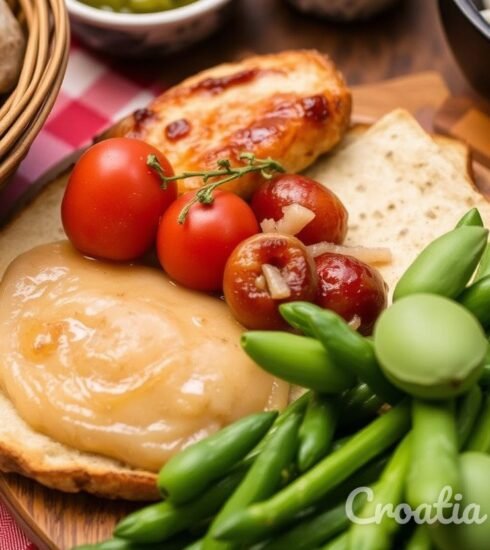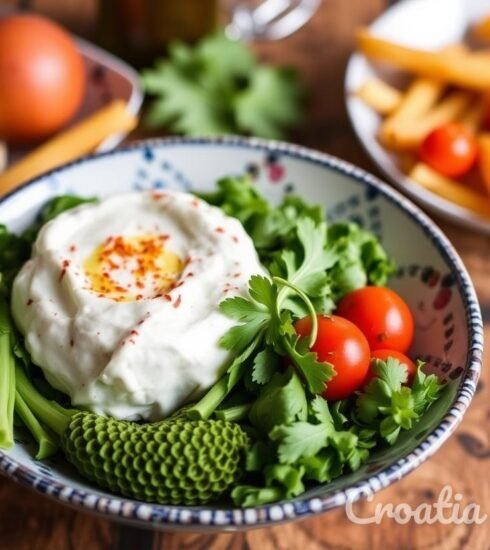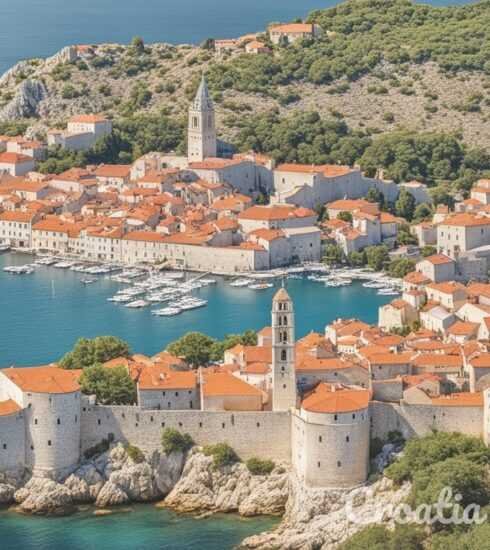Unveiling Croatian Culinary Secrets: Explore Heritage Recipes and Local Legends
Secrets of Croatian Flavor: A Journey Through Heritage Recipes and Local Stories
When one thinks of Croatian culinary secrets, it’s often the scenic coastlines and UNESCO World Heritage Sites that spring to mind. However, Croatia is a treasure trove of flavors, shaped by a blend of Mediterranean, Central European, and Balkan influences.
The Diverse Landscape of Croatian Cuisine
Croatia’s culinary scene is as diverse as its topography. From the rolling hills of Slavonia to the pristine beaches of Dalmatia, each region offers its unique flavors and cooking techniques. Here are some key regions and their signature dishes:
- Dalmatia: Known for its seafood, this region offers traditional dishes such as pašticada (a slow-cooked beef dish) and zuppa di pesce (fish stew).
- Slavonia: This area is known for hearty meals, including kulen (spicy sausage) and fiš paprikaš (fish stew).
- Istria: Famous for truffles and olive oil, Istria boasts residents perfecting pasta dishes like pljukanci and fuži.
- Central Croatia: Here, stews made with game meat and hearty potato dishes take center stage, often accompanied by homemade bread.
Understanding the geography and climate of Croatia helps to explain its varied food offerings. The country enjoys a Mediterranean climate along the coast, resulting in the growth of olives, grapes, and various fruits, while the inland regions support grain farming and animal husbandry.
Heritage Recipes: A Taste of Tradition
To delve deeper into the secrets of Croatian flavor, we must explore the traditional recipes that have been passed down through generations. Many recipes boast roots going back centuries, reflecting the country’s rich history and cultural intermingling.
1. Pogácice
These small biscuits are a staple at Croatian gatherings. Made with simple ingredients like flour, salt, and lard or butter, pogácice are often served during festive occasions. The secret to a perfect biscuit lies in ensuring the dough is not overworked, allowing for a light and airy texture.
2. Čobanac
Another dish emblematic of Croatian culinary secrets is čobanac. Originating from Slavonia, this hearty stew combines various types of meat, spices, and vegetables. The preparation of čobanac usually involves a communal effort, with family and friends gathering around a fire to enjoy the cooking process together.
Seasonal Ingredients and Local Markets
Fresh, seasonal ingredients play a critical role in Croatian cuisine. Locals prefer sourcing their produce from open-air markets. Cities like Zagreb and Split are known for vibrant markets where you can find:
- Locally grown fruits and vegetables
- Cheeses from regional dairies
- Preserved meats and smoked fish
- Homemade olive oils and wines
This reliance on local produce enhances the flavor profiles of traditional dishes and showcases the natural bounty of the land. Eating in Croatia often becomes a community experience, with people sharing recipes and advice at these markets.
Olive Oil: The Liquid Gold of Croatia
Croatia is one of the world’s leading olive oil producers, particularly notable in regions like Istria and Dalmatia. With over 100 indigenous varieties of olives, Croatian olive oils range in flavor from fruity and mild to robust and peppery. A few important points about Croatian olive oil include:
- Quality Certification: Many oils carry PDO and PGI quality certifications, ensuring authenticity.
- Tastings and Competitions: Croatian oils regularly win awards in international competitions, underscoring their high quality.
- Health Benefits: Extra virgin olive oil is renowned for its numerous health benefits, from lowering cholesterol to enhancing skin health.
When visiting the country, indulging in olive oil tastings is a must. Many local producers offer tours of their groves, providing insights into the cultivation and pressing processes.
Wine: An Integral Part of Croatian Cuisine
Much like olive oil, wine plays a vital role in Croatian culture. The country is home to several wine regions, with more than 130 indigenous grape varieties being cultivated. Notable wine regions include:
- Dalmatia: Known for strong reds like Plavac Mali and whites such as Pošip.
- Istria: Famous for its white Malvasia and red Teran.
- Slavonia: Produces top-quality white wines like Graševina.
Exploring the world of Croatian wines provides an opportunity not only to taste but also to understand the historical and cultural significance of viticulture in the country. Local wineries often serve traditional meals alongside wine tastings, allowing visitors to experience true culinary harmony.
Festivals and Food Experiences
Culinary festivals in Croatia reflect its vibrant food culture, allowing for unique interactions and engaging experiences. Some of the most celebrated festivals include:
- Festival of Lent: Celebrated with traditional foods, fishing, and seafood specials.
- Istrian Olive Oil Day: A celebration dedicated to the local olive oil producers, including tastings and workshops.
- Truffle Days in Istria: An event dedicated to the truffles that are harvested in the region, featuring tastings and guided hunts.
These festivals not only highlight local flavors but also foster community and cultural pride, making them essential experiences for anyone wishing to dive into Croatian culinary secrets.
Stories Behind the Recipes
Every traditional dish has a story, often tied to regional customs or historical events. For example, the preparation of strukli, a traditional pastry filled with cheese and sour cream, is linked to the cultural practices of the people of Zagorje. It is often made during wedding celebrations and major family gatherings, symbolizing abundance and festivity.
Another remarkable tale is that of brudet, a popular fish stew intertwined with maritime culture. Each coastal town boasts its variation of the dish, often made with the catch of the day, accompanied by polenta. This familial practice of sharing a communal meal over a pot of brudet signifies unity and togetherness among friends and family.
Embracing Sustainability in Croatian Cuisine
In recent years, there has been a noticeable shift towards sustainable practices within the Croatian culinary scene. Many chefs and local producers are integrating sustainability by:
- Promoting farm-to-table dining experiences.
- Utilizing organic farming practices.
- Encouraging waste reduction through mindful cooking and consumption.
This approach to food not only satisfies the modern diner’s need for ethical consumption but also helps preserve the traditional practices that define Croatian cuisine.
A Culinary Journey Through Croatia
Each visit to Croatia can serve as a culinary quest. Culinary routes, such as the “Wine Road” in Istria or the “Olive Oil Route” in Dalmatia, afford travelers the opportunity to experience the nation’s gastronomic heritage firsthand, getting to know local producers, participating in workshops, and tasting an array of culinary delights.
As you explore these routes, you will undoubtedly encounter local hosts eager to share their culinary secrets, whether it be the process of making homemade peka, a traditional dish cooked under an iron bell, or the methods of curing meats the old-fashioned way. These interactions not only enhance the travel experience but foster a connection to the history and culture of the people.
Conclusion: The Allure of Croatian Culinary Secrets
The journey through Croatian culinary secrets reveals a complex tapestry of flavors, traditions, and culinary practices. The strong sense of community, coupled with a deep respect for the land, culinary traditions, and local stories, turns every meal into an experience worth savoring. Whether you’re enjoying a simple olive oil tasting, assembling ingredients for a traditional kitchen table feast, or participating in lively cooking festivals, Croatia offers an abundance of opportunities to engage with its rich culinary heritage.







